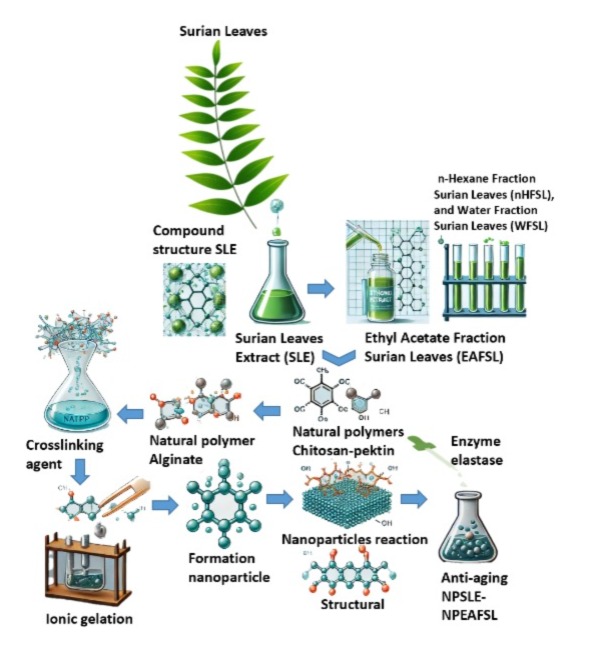
Toona sinensis leaves are hold potential as a natural source of antioxidants. Natural antioxidants work synergistically to stabilize Reactive Oxygen Species (ROS) during the photoaging process. T. sinensis leaves contains phytochemical compounds, such as phenolics and flavonoids as major compounds. Flavonoids and phenolics exhibit anti-aging activity, particularly in inhibiting elastase enzymes. To facilitate the delivery of Surian Leaves Extract (SLE) and Ethyl Acetate Fraction Surian Leaves (EAFSL) as anti-aging agents, a nanotechnology-based delivery system in the form of polymeric nanoparticles was developed using the ionic gelation method. This study compared the inhibitory abilities of Surian Leaves Extract (SLE), n-Hexane Fraction Surian Leaves (nHFSL), Ethyl Acetate Fraction Surian Leaves (EAFSL), and Water Fraction Surian Leaves (WFSL) on elastase enzymes. Additionally, the study compared elastase enzyme activity towards SLE, nHFSL, EAFSL, and WFSL. Furthermore, the study characterized the properties of the obtained SLE and EAFSL nanoparticles. The results indicated that both SLE and EAFSL exhibited higher inhibition percentages against elastase enzymes compared to WFSL and nHFSL. The percentage of elastase enzyme activity showed an inverse relationship with the inhibition percentage. Higher compound concentrations resulted in lower elastase enzyme activity and higher inhibition power. Based on the inhibition percentage against elastase enzymes, SLE nanoparticles were developed using the ionic gelation method with chitosan (polycation) and alginate (1%:1%) as polymers, and NaTPP (polyanion) as a cross-linker. This approach suggested that SLE and EAFSL nanoparticles can enhance anti-aging activity, potentially reducing the required dosage due to increased active ingredient absorption.
Total file downloads: 13